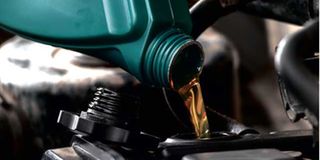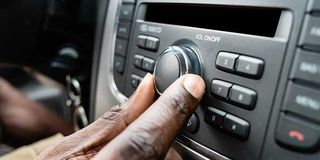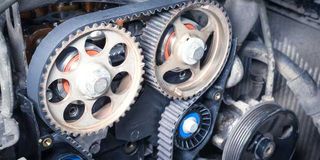Premium
Does my car really need a catalytic converter?

Catalytic converters (commonly known as “Cats” or “Catalysers”) are not necessary for the proper operation of all mechanical parts that make the engine run, the transmission operates or the wheels go around.
My garage says the catalytic converter in my exhaust pipe is damaged and needs to be replaced, and it will be expensive. Will the car still work properly if I just have it removed and fit a straight pipe in the gap it leaves?
Stanley
On older cars that do not have computerised engine management systems, the answer is probably yes. Catalytic converters (commonly known as “Cats” or “Catalysers”) are not necessary for the proper operation of all mechanical parts that make the engine run, the transmission operates or the wheels go around.
They are fitted purely to help detoxify the exhaust fumes. They contain a honeycomb of materials that act as “catalysts” (materials that speed up chemical reactions). Some of those materials, for instance, platinum, rhodium and palladium, are very expensive.
On more modern cars with microchip sensors and computerised engine management systems which monitor and instruct over-ride mechanical functions, the malfunction or absence of a cat converter will almost certainly make the “check engine” light come on, and some could be designed to encourage you to take remedial action by limiting engine performance. That will vary from make to make, model to model, and year to year.
Although the potential of catalysers to make exhaust gases less harmful has been known for well over a century and various prototypes were designed and tested way back then, it was not until the 1970s that regulations in some countries demanded that systems be installed to turn poisonous carbon monoxide and unburnt hydrocarbons in engine exhaust gases into less harmful carbon dioxide and water.
This was not instantly and universally possible because most kinds of petrol contained tetraethyl lead to enhance octane ratings and reduced engine knock. And although catalysts remain unchanged while they speed up reactions between other chemicals they come into direct contact with, leaded petrol coated their surface so that contact was blocked.
That is why we now have almost universally “unleaded” fuels – not because, as initially promoted and imagined, lead itself is a cumulative heavy-metal poison (which it is). The alternative chemicals now used as octane enhancers are not notably less toxic or kinder to the human body; but they are harmless to the honeycombs in cat converters which, in turn, do help remove some other toxins from your exhaust fumes.
Sure, you can use your fingers, but remember they are not precision instruments…
Gavin,
We are often advised to detect and diagnose mechanical problems by touching components to feel how hot they are (wheel hubs to see if the brakes are binding, radiator top tanks and differentials to see if they are overheating, and so on). Okay, but how hot is too hot? Are there ways to measure that without carrying around an electronic probe thermometer?
Robert
Using temperature for detection and diagnosis is good and often very helpful advice, but it is rarely about a specific measure of degrees centigrade; more often it is about comparing the “hotness” of one wheel hub or tyres with another, or with a “normal” benchmark you have established when nothing is wrong. I recommend that you get to know what “normal” is from time to convenient time on your journeys.
Then you will know when there is a “difference”, just as you know the normal sound and smell of your vehicle and can therefore recognise (and check) if there is a change. Eyes, ears, nose and touch. All those sensors should be switched on.
It is “normal” for some parts of a car to get very hot indeed – especially the exhaust manifold (hence the turbo), the engine block, and the brake linings. Touching them is not recommended just after the car has been working hard. They are in the “red hot” realm – hot enough to cause instant injury. Many other parts get warm and even quite hot in the course of normal operation.
That is where comparisons or benchmarks come in. And your fingertips are quite good thermosensors! Very broadly, and making allowances for whether you have dainty soft-skinned fingers or work-calloused hands, anything below blood temperature (about 37 degrees) should feel neutral or cool. From 40-50 degrees will feel progressively warm.
Hot, for the fingertips, start at about 60 degrees – hot enough to be quite uncomfortable to hold (never mind grip), but possible to hang on if you must, and the result will be about discomfort, not injury - 70 degrees will trigger a let-go reflex, but contact for a second or two will induce ouch, not damage. At 80 degrees your reflex will be instant and almost irresistible in less than a second (top tank of the radiator after hard use). Retaining contact will be extremely painful.
At 90 degrees any contact of more than a split second could cause blistering. Generally, on any part of the car not directly connected with the engine, exhaust, brakes or parts of the dampers, any temperature above 70 is probably not “normal”, and a likely indicator of unintended rubbing, binding or inadequate lubrication or ventilation. Grounds for a check and remedy.
The human body is well-designed to let you know if you are about to damage yourself, but temperature tolerances do vary from person to person. My missus likes bath water so hot that even if I use the same water 15 minutes after she gets out, I have to add cold before I get in. But I can hand her a plate from the microwave with bare hands and she can’t touch it. We once knew a guy whose hands were so calloused by hard labour that he could take dishes from the oven without using a glove. So the touch-heat descriptors around your car are guidelines, not precision instruments.
Which Automatic Transmission Fluid is best for my Toyota DX 5E-FE?

Most automatic gearboxes are designed to run on the standard Automatic Transmission Fluid oils readily available on station forecourts.
Gavin,
What is the required Automatic Transmission Fluid to use in an automatic gearbox of Toyota DX 5E-FE?
Mutwiri M
The same oil is also used for power steering systems and some manual gearboxes. The model numbers in your question refer to the engine, which is fitted to several different Toyota models with possibly different gearboxes. The probability is that your “automatic” is a conventional AT for which any good quality ATF oil is suitable. A fluid designated ATF+4 is recommended for some more modern automatics.
Some gearboxes loosely referred to as “automatic” (as opposed to manual) now have Constantly Variable Transmissions (CVTs), which require CVT oil. The difference is important enough that ATF is coloured red and CVT fluid is green to avoid confusion. Their friction-management additives need to be different.
There are several ways (other than the colour of the oil) to establish whether your automatic is an AT or a CVT. Ask your dealer or mechanic; check the owner’s manual; the gearbox oil level dipstick might be marked to confirm the type; the configuration on the gear lever (CVTs won’t have numbers); and, surest of all, drive the car.
ATs have several gears, and even if they operate very smoothly there will be a slight jerk as the gears change by moving from one cog to another. CVTs do not have gear “steps” – the ratio varies (automatically, both up and down the ratio range) in a continuous progression.
Modern sound systems are not my forte, but here goes…
Hello,
My uncle's car radio is a NHZN-W60G 76045. The radio, Bluetooth and USB ports work well, but the CD has no audio. Can you help me fix this? Thank you for your time.
Modern sound systems are not my forte. I get my music more traditionally, by singing in the shower (bathroom tiles have very user-friendly acoustics).

My uncle's car radio is a NHZN-W60G 76045. The radio, Bluetooth and USB ports work well, but the CD has no audio.
On instinct and in ignorance, I would check the disc is inserted correctly, blow away any likely dust, check the system is not muted and the audio cable is properly connected, and otherwise refer to the user manual (usually available online) for any product-specific quirks like muting and unlocking. And if that didn’t solve the problem I would take the car to a radio shack (or an electrician) not a general garage mechanic.
Here’s why the condition of timing belts or chains is so important
What is the difference between timing belts and timing chains?
Mike
Belts are made of neoprene reinforced with fabric. Chains are made of metal links, otherwise, both do exactly the same job in exactly the same way – connecting the engine’s crankshaft (which is driven by the pistons) to the camshaft (which opens and closes the inlet and exhaust valves) linked to the ignition system and fuel injectors. As these elements interact several thousands of times per minute, it is essential that they synchronise with perfect “timing”.

Belts are lighter, cheaper and quieter, but they are not immune to stretching or slipping and need to be replaced about every 100,000km as a precautionary measure even if they are not faulty.
To give you a sense of how fast and precise that interaction is, if you could somehow look inside an engine working at high revs, you wouldn’t see anything – just a blur where there are moving parts. In a four-cylinder engine, for each cycle (one rotation of the crankshaft) there are 20 separate piston, valve and ignition actions. Consider how fast those actions must be when the engine is working at 6,000 revolutions per minute (rpm)! The quality, setting and condition of the timing belt is fundamental and uncompromising.
Chains last longer (often the whole lifetime of the engine) and are less likely to snap or slip, but they are heavier, more expensive and make more noise. They can also wear out – quickly – if lubrication is defective.
Belts are lighter, cheaper and quieter, but they are not immune to stretching or slipping and need to be replaced about every 100,000km as a precautionary measure even if they are not faulty because even very small defects can seriously affect engine performance and major failure of the timing belt can wreak havoc.
Do you have a Motoring question? Email [email protected]





